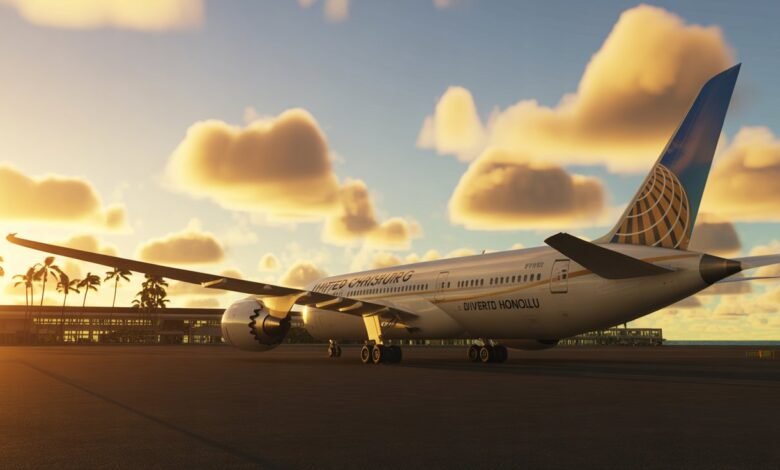United Christchurch SFO Diverted Honolulu What Really Happened?

United Christchurch SFO Diverted Honolulu Air travel is full of surprises—some pleasant, others nerve-wracking. One recent headline that caught many people’s attention involved a United Airlines flight traveling from Christchurch, New Zealand, to San Francisco. Instead of making it to California as planned, the aircraft was unexpectedly diverted to Honolulu.
For passengers, this sudden change stirred a mix of concern, curiosity, and even relief once they safely landed. But why do such diversions happen, and what’s the bigger picture behind this incident? Let’s unpack the story in detail.
Imagine boarding a long-haul flight, ready to settle in for hours of travel, only to wake up to an announcement: “Ladies and gentlemen, we are diverting to Honolulu.” That’s exactly what happened on the United Airlines flight from Christchurch to San Francisco. While the news sounded alarming to some, diversions like this are more common than most travelers realize.
They’re part of the intricate safety web that keeps aviation one of the safest forms of transportation. In this article, we’ll dive into the incident, explore the reasons behind diversions, examine the passenger experience, and understand what this means for the airline industry as a whole.
The Route in Focus Christchurch to San Francisco
The Christchurch–San Francisco service is a long intercontinental journey connecting New Zealand’s South Island with the West Coast of the United States. It’s not a short hop; it’s a flight covering nearly 6,700 miles over the Pacific Ocean.
Because of the route’s length and isolation, aircraft operate under strict safety protocols. Any irregularities—be they mechanical issues, medical emergencies, or weather conditions—are taken seriously.
Why Honolulu Becomes a Diversion Point
Honolulu International Airport (Daniel K. Inouye International Airport) is often the go-to diversion stop for trans-Pacific flights. Here’s why:
- Strategic Location: Honolulu sits roughly halfway between Australasia and North America, making it an ideal emergency or precautionary landing site.
- Facilities: The airport is fully equipped to handle large aircraft like the Boeing 787 or 777, which commonly operate these routes.
- Safety Net: In aviation planning, having alternate airports is not optional—it’s mandatory. Honolulu often features as the designated alternate for many flights crossing the Pacific.
What Triggered the Diversion?
While airlines don’t always disclose full details immediately, diversions generally stem from a few key factors:
- Mechanical Precautions – Even minor technical warnings can prompt a diversion.
- Medical Emergencies – If a passenger or crew member requires urgent care, pilots prioritize the nearest capable airport.
- Weather Concerns – Severe storms, turbulence, or volcanic ash in the path may force rerouting.
- Fuel Management – In rare cases, fuel imbalances or inefficiencies can lead to precautionary stops.
The Passenger Experience

For passengers, United Christchurch SFO Diverted Honolulu the diversion was both unsettling and oddly comforting. On one hand, nobody enjoys hearing that a flight can’t continue as planned. On the other, landing safely in Honolulu meant everyone was out of harm’s way. Some travelers described the experience as stressful initially, but once on the ground, relief set in quickly.
Imagine it like a road trip detour: frustrating in the moment, but far better than pushing through unsafe conditions. Plus, if you must be diverted, Honolulu—with its palm trees and warm breezes—is not the worst stopover.
Behind the Scenes: The Airline’s Role
United Airlines, like other carriers, has established procedures for such situations:
- Communication: Pilots are trained to keep passengers informed, balancing clarity with reassurance.
- Coordination: Air traffic controllers, ground staff, and maintenance crews work together to minimize disruption.
- Passenger Care: Upon landing, airlines typically arrange meals, accommodations, or rebooking assistance, depending on the length of delay.
How Common Are Diversions?
It might surprise many to know that diversions happen every day across the globe. They rarely make headlines unless the flight is long-haul or involves unusual circumstances. Statistically, diversions affect only a tiny fraction of flights, but they highlight the flexibility and resilience built into aviation systems.
The Cost of a Diversion
While passengers are shielded from the financial side, diversions can be expensive for airlines:
- Fuel Waste: A trans-Pacific jet burns thousands of gallons per hour.
- Ground Handling Fees: Airports charge for unscheduled services.
- Passenger Compensation: Depending on regulations, airlines may owe passengers support.
Honolulu: More Than Just a Stopover
For decades, Honolulu has served as a critical waypoint in Pacific aviation. During World War II, it was a hub for military logistics. Today, it functions as a safety net for trans-Pacific commercial flights. The airport’s readiness for sudden influxes of international passengers is part of what makes global aviation dependable.
Lessons for Travelers
So what can you, as a traveler, take away from this?
- Expect the Unexpected: Diversions are rare, but they happen.
- Trust the Crew: Pilots and flight attendants are trained for exactly these scenarios.
- Stay Flexible: Think of diversions as a delay in your story, not the end of it.
- Safety Over Schedule: A few hours lost is worth lives saved.
Broader Impact on Aviation
Every diversion adds to aviation’s learning curve. Data from these incidents inform better route planning, improved aircraft design, and refined safety protocols. In a way, each detour strengthens the system for future travelers.
Conclusion
The United Airlines diversion from Christchurch to San Francisco with a landing in Honolulu was more than just a travel hiccup—it was a demonstration of aviation safety in action. Passengers may have experienced anxiety, but they also witnessed the extraordinary care and planning that defines modern air travel.
Think of it as a storm detour on a road trip: inconvenient but ultimately protective. At the end of the day, the incident reinforces one truth—aviation’s top priority is always to get everyone on the ground safely.
FAQs
1. Why was the Christchurch to San Francisco flight diverted to Honolulu?
It was a precautionary measure, likely due to a technical or medical concern, ensuring passenger safety above all else.
2. How often do international flights divert to Honolulu?
Quite frequently as a backup option, though only a small percentage of total flights experience diversions.
3. What happens to passengers after a diversion?
Airlines typically provide rebooking assistance, accommodation if needed, and ensure passengers reach their final destinations safely



